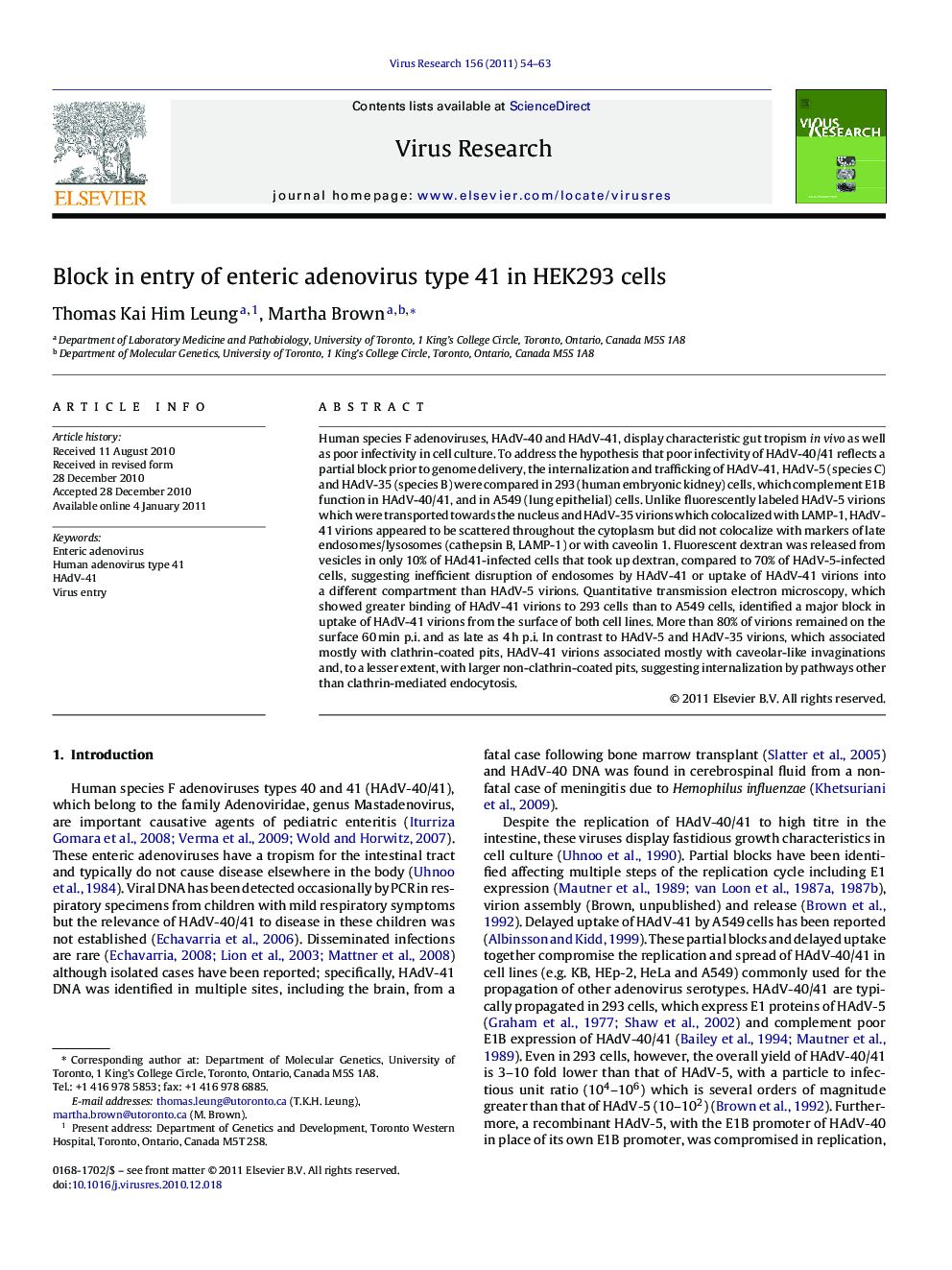| Article ID | Journal | Published Year | Pages | File Type |
|---|---|---|---|---|
| 6143524 | Virus Research | 2011 | 10 Pages |
Abstract
Human species F adenoviruses, HAdV-40 and HAdV-41, display characteristic gut tropism in vivo as well as poor infectivity in cell culture. To address the hypothesis that poor infectivity of HAdV-40/41 reflects a partial block prior to genome delivery, the internalization and trafficking of HAdV-41, HAdV-5 (species C) and HAdV-35 (species B) were compared in 293 (human embryonic kidney) cells, which complement E1B function in HAdV-40/41, and in A549 (lung epithelial) cells. Unlike fluorescently labeled HAdV-5 virions which were transported towards the nucleus and HAdV-35 virions which colocalized with LAMP-1, HAdV-41 virions appeared to be scattered throughout the cytoplasm but did not colocalize with markers of late endosomes/lysosomes (cathepsin B, LAMP-1) or with caveolin 1. Fluorescent dextran was released from vesicles in only 10% of HAd41-infected cells that took up dextran, compared to 70% of HAdV-5-infected cells, suggesting inefficient disruption of endosomes by HAdV-41 or uptake of HAdV-41 virions into a different compartment than HAdV-5 virions. Quantitative transmission electron microscopy, which showed greater binding of HAdV-41 virions to 293 cells than to A549 cells, identified a major block in uptake of HAdV-41 virions from the surface of both cell lines. More than 80% of virions remained on the surface 60Â min p.i. and as late as 4Â h p.i. In contrast to HAdV-5 and HAdV-35 virions, which associated mostly with clathrin-coated pits, HAdV-41 virions associated mostly with caveolar-like invaginations and, to a lesser extent, with larger non-clathrin-coated pits, suggesting internalization by pathways other than clathrin-mediated endocytosis.
Keywords
Related Topics
Life Sciences
Immunology and Microbiology
Virology
Authors
Thomas Kai Him Leung, Martha Brown,
